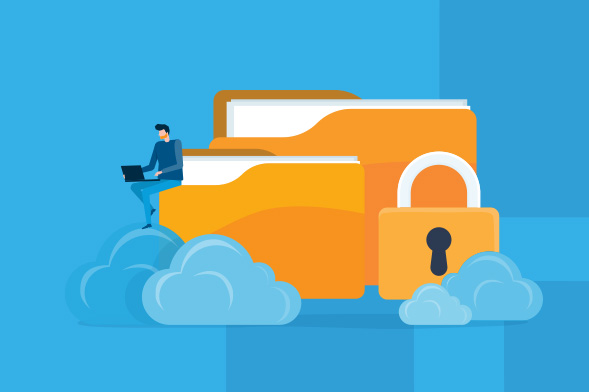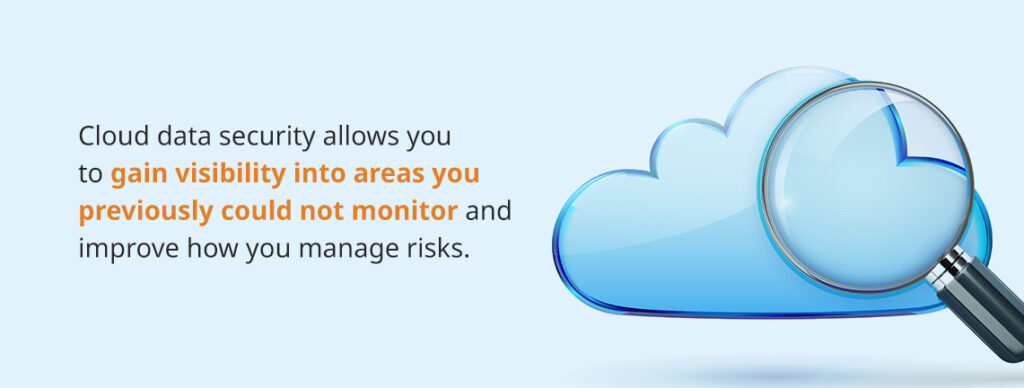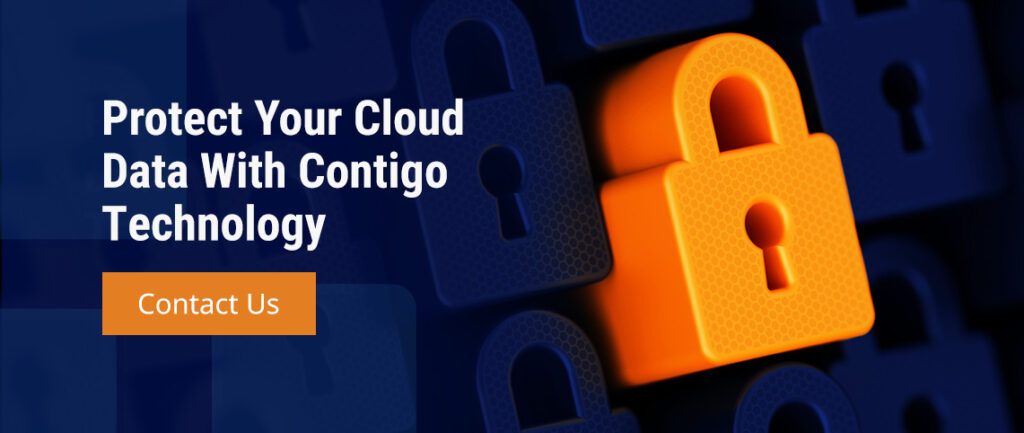
Data Security in Cloud Computing
Cloud computing is a collection of IT resources accessible over the internet. These resources include infrastructure, data storage, applications, networking and software. Primarily, there are two types of clouds — public and private. Cloud computing allows workforces to access data from virtually anywhere, though this can also raise several data security concerns.
Securing a cloud environment is a shared responsibility between the cloud provider and the consumer. The cloud provider is often responsible for securing physical assets such as data centers, physical servers, network switches and routes, and you’re responsible for securing data storage, data and access to your systems and applications.
It’s your responsibility to secure data on the cloud. Cloud data security is the practice of protecting data and other digital assets from security threats. Learn more about how to secure your data in the cloud and reap the benefits of cloud computing securely.
What Is Cloud Data Security?
Data security in the cloud is a challenge that stems from the unique risks that technology brings as traditional network perimeters disappear. Data security in cloud computing requires a different approach — one that considers both the complexity of data and security models in the cloud.
Cloud data security involves implementing policies, procedures, technologies, controls and services to protect data, applications, users and systems in the cloud. A strong cloud data security strategy must include all aspects of protecting data, including:
- Data in use: Use proper authentication and access controls to secure data being accessed through an application or an endpoint.
- Data in transit: Protect in-transit data while it’s moving through the network using strong encryption and decryption methods.
- Data at rest: Secure stored data through proper access restrictions, user authentications and encryption.
To ensure this level of protection, security solutions should provide privacy across your networks, applications and other cloud environments. You should also have control over data access and complete visibility over all the data in your network, including in the cloud. Cloud data security solutions should also help you maintain data confidentiality, integrity and availability.
Cloud data security is essential for preventing lost, stolen, damaged or otherwise compromised data, which have significant consequences for your business. Understanding the need for data security in cloud computing improves your ability to safe-keep your business’s data.
Benefits of Data Security in Cloud Computing
Data security is essential in protecting your business data on the cloud. Consider these benefits of having data privacy and security in cloud computing.
1. Improved Regulatory Compliance
Data security solutions safeguard your sensitive data and help you comply with industry standards and regulations. Failure to maintain regulatory compliance may result in consequences like fines, loss of business and reputation risk. Industry-specific data security solutions and managed services typically provide effective regulatory compliance.
2. Increased Visibility

Visibility refers to your ability to monitor data across your network. Cloud data security allows you to gain visibility into areas you previously could not monitor and improve how you manage risks. Many cloud security services offer constant cloud monitoring of all your assets in the cloud. Increased cloud visibility increases the likelihood of identifying security risks before they materialize.
3. Lifecycle Protection
A cloud data security solution helps protect your data through its entire lifecycle, from cradle to grave. This ensures your data is protected through every stage rather than just storage.
4. Proactive Management
With increased visibility comes proactive threat management. Because cloud security allows you to identify security risks quickly, your IT team or managed service provider can immediately address the threat and mitigate data risks. Proactive threat management is essential because the longer threats go unmanaged, the more data can be compromised.
Security Issues With Cloud Computing
A common misconception about cloud computing is that it’s less secure than a physical data center. Realistically, cloud computing can be as secure as a physical server if it’s equipped with a proper cybersecurity strategy. This is where many companies experience security issues because they don’t realize cloud data requires updated security requirements.
Here are a few potential security issues you may encounter with the cloud:
- Data breaches and misconfigurations: Data breaches in the cloud look more like stolen credentials due to poor passwords and exploiting other areas of vulnerability. Similarly, misconfigurations exploit various security gaps to cause data breaches, allowing private data into the wrong hands.
- Unauthorized access: Whether malicious or accidental, lack of access control allows unauthorized users to access private data. In regulated industries, any unauthorized access is considered a breach. Insider threats use their access for the wrong reasons, leaking data from the inside.
- Unsecured APIs: Application programming interfaces (APIs) is software that allows two applications to communicate and work together. When using APIs to transfer data to suppliers or partners, data can be exposed if API endpoints are unsecured.
If properly secured mechanisms are put in place to safeguard an organization’s data, cloud computing can offer great benefits.
Cloud Data Security Best Practices
A cloud data security strategy made up of the right policies and procedures can provide strong data assurance. Consider these best practices to maximize your cloud data security.
1. Encrypt Your Data
Encrypt data with appropriate encryption protocols at all levels, including while data is at rest and in motion across all databases and secure file shares. An application must authenticate itself and provide the decoding key to decrypt data and make it available for the authorized user.
Good data storage hygiene, such as detecting and eliminating misconfigured data buckets on the cloud, and terminating orphan resources, also further helps improve security.
2. Prioritize Granular, Policy-Based Identity and Access Management, and Authentication Controls
Identity and access management is a data privacy tool in cloud computing that gives you more control over user access and privileges. Be sure to design group and role-based security rather than at the individual to make it easier when business requirements change. Grant only minimal access privileges to the essential assets and APIs. Enforce strong password policies, permission time-outs and other authentication best practices.
3. Implement Multi-Factor Authentication
Cloud security providers offer multi-factor authentication (MFA) to strengthen your security measures. MFA requires users to input additional identifying information with their login credentials to ensure the user logging in is who they say they are.
4. Safeguard Applications With Next-Generation Web Application Firewall
Next-generation web firewall will inspect and control traffic to and from web application servers. These firewalls also automatically update web application firewall rules in response to traffic behavior changes.

Protect Your Cloud Data With Contigo Technology
Contigo Technology has the IT solutions for you, whether you’re looking for cybersecurity or cloud computing services. Third-party providers like us offer significantly more flexibility at an affordable price. Managed cloud and cybersecurity services provide peace of mind and leave more time for you to manage your team.
Our highly experienced and knowledgeable team will consult with you to customize solutions and meet your business’s needs. Contact us to learn how we can help you protect your cloud data.
